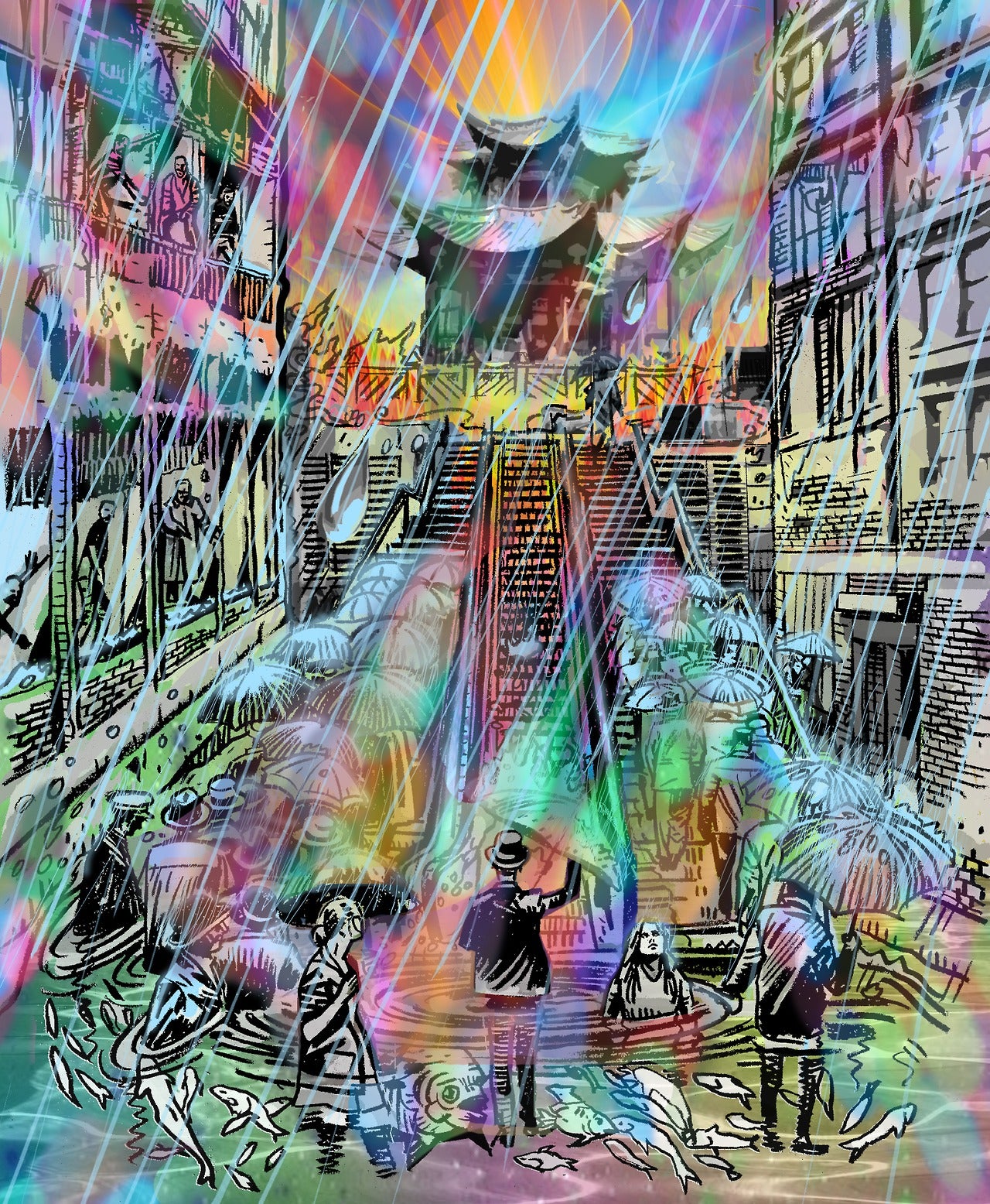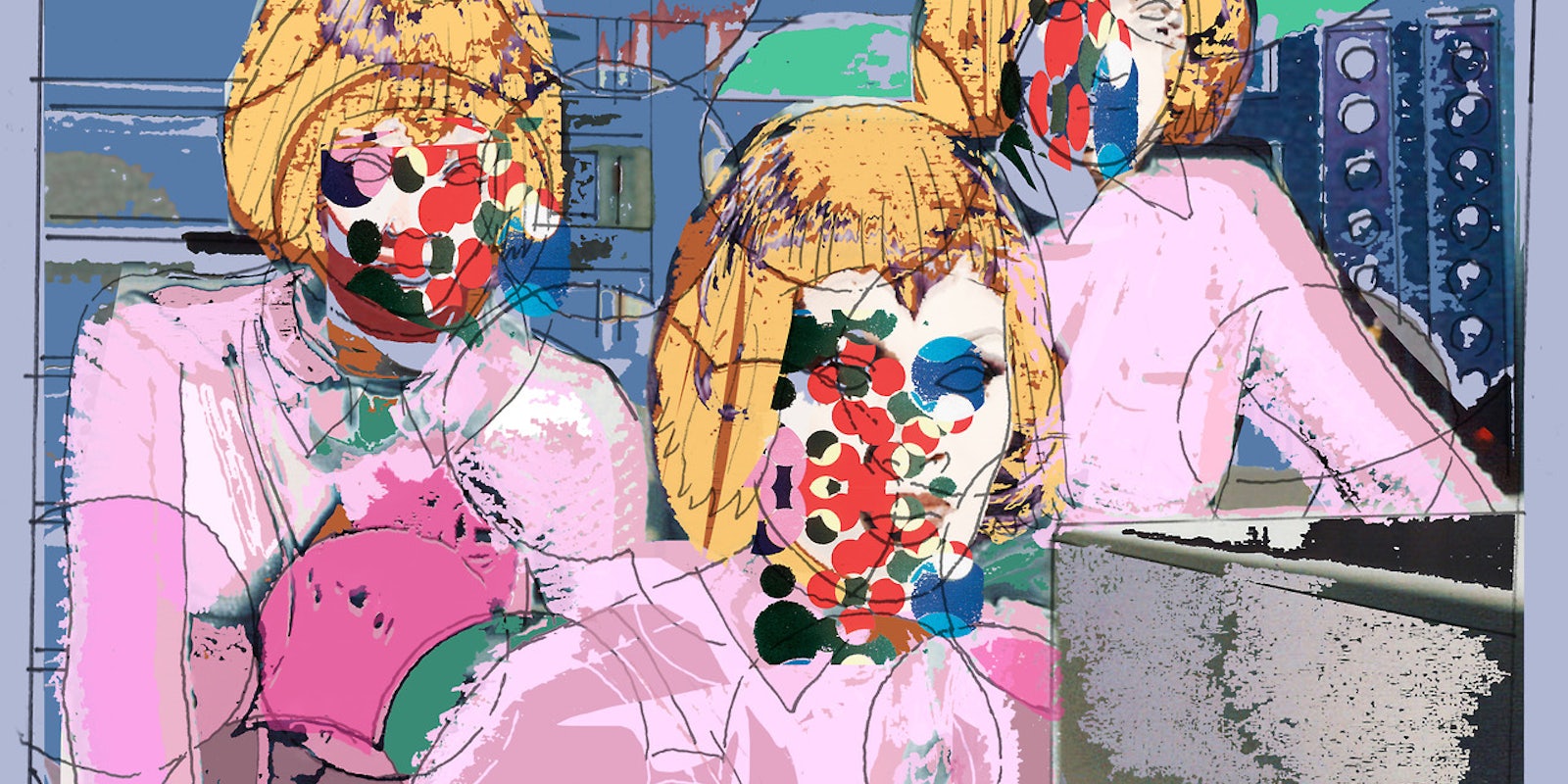This story was produced by Tumblr Storyboard, Tumblr’s in-house editorial arm.
The influences of Brooklyn-based electronic musician Sarth Calhoun—of Lou Reed’s Metal Machine Trio—are, to put it succinctly, sprawling. Stretching from the surreal novels of Haruki Murakami to rock-opera bands like Pink Floyd and the innovations of sound-generating software system (he calls himself an “electronic alchemist”), his interests are so diverse that it becomes hard to peg him to any one genre. That ambiguity is particularly fitting for his latest project, The Book of Sarth, an interactive, multimedia iPhone and iPad app that combines original music with photography, illustration and ambient sound design. Calhoun calls it a “gralbum”—that’s short for “graphic album.”
The Book of Sarth (available on iTunes) sets off with two children who discover a mysterious piece of technology that emits unfamiliar sounds (music!)—sounds that could change the world, though the government attempts to cover them up. Set to Calhoun’s driving, synthesized electronic music, the graphics that accompany the unfolding narrative move from augmented photographs to cartoons and back again — an edgy match for a dystopian cyberpunk adventure.

The story is set in a kind of futuristic dystopia where there’s no music. How did that idea come about?
The story is an archetypical story. Kids find a device and it affects them in a certain way, the sounds it makes and the music affects them in a certain way. It’s symbolic, a meta-narrative about how music and technology can change people. The whole story was inspired by the music.
You’re calling this a “gralbum” Can you explain what that means?
We’re basically starting from the concept of an electronic book, because that is the format that allows you to take existing art forms and combine them together. So a gralbum is a platform that allows writers and artists and musicians to create collaborative, interactive work without making a radical alteration to their way of working. The book is a metaphor to combine this art and music.
What inspired you to make such an immersive multimedia project?
When I got the first iPad, I was thinking about all these different interests I had, and I thought, “Oh, I could put all these things together and create an installation piece, and then people could buy it and carry it around with them!” This is all stuff you want to do, but before, it wasn’t really practical.

Did the iPad platform change how you thought about music?
Absolutely. Multi-touch instruments at that time were thousands of dollars; on that basis alone I could buy this iPad and just see what happens. I was going on tour with it at the time and I was using it constantly. It’s like the ultimate touring companion. When I got off the tour I was thinking, “I love to buy books on here and they’re getting cooler and cooler. I want to do something like that!”
How do you think advances in technology have impacted music-making?
The app format seems like a completely new medium to work in. Music always needs a new medium, because it’s always changing. I think if music doesn’t have technology on its side, it tends to have the problem of where to go, it starts to run out of steam. The last big medium change was the music video.
What kind of instruments did you use to make the music for the project?
This is my first completely solo record where no one else played on it. I just finished doing this noise tour with Lou Reed’s Metal Machine Trio and Lou really pushed me to make newer sounds and explore textures sonically. I really wanted to do that, but I wanted it in a more structured, rhythmic form, so I made all these tunes.
By Kyle Chayka
